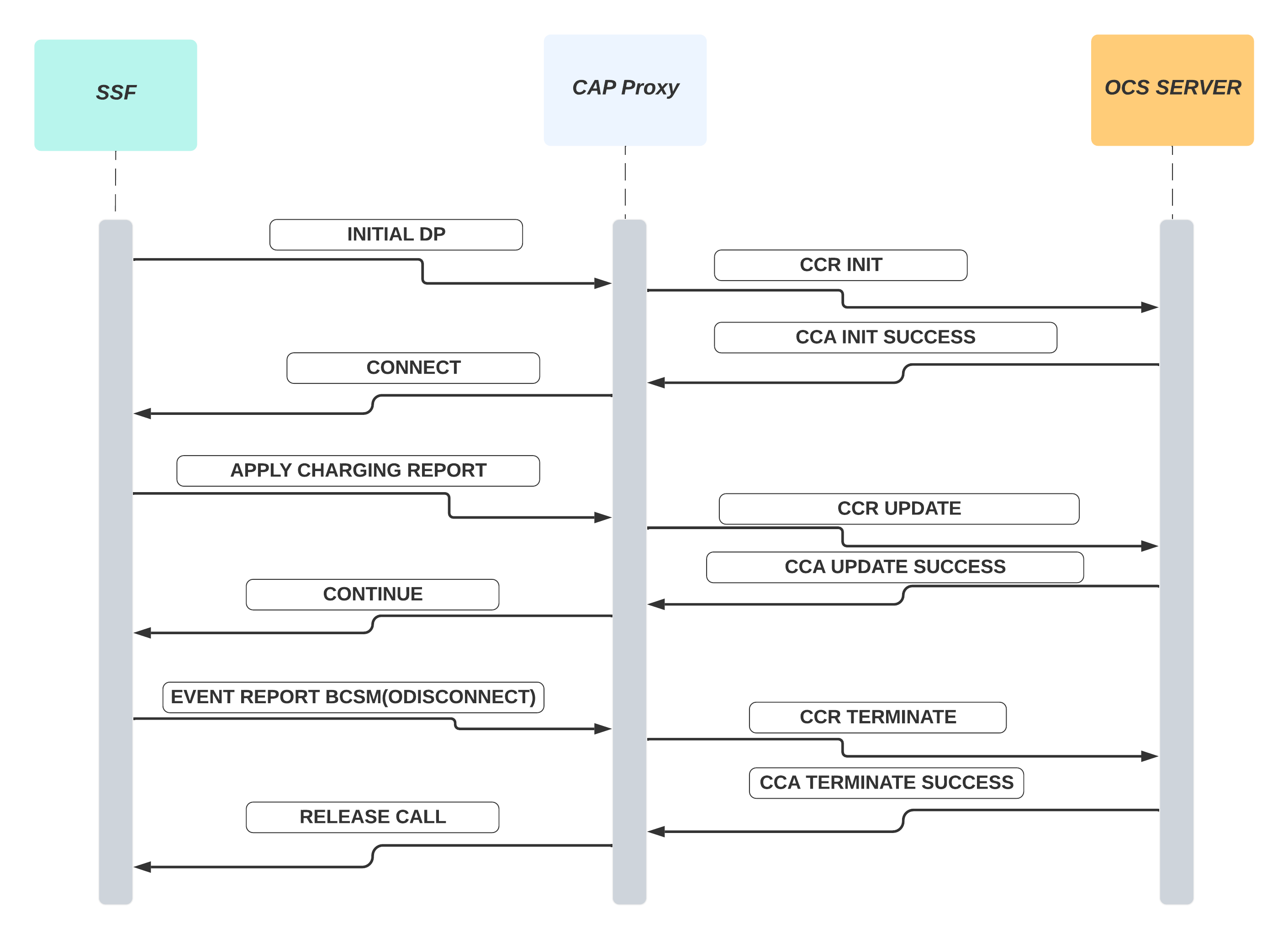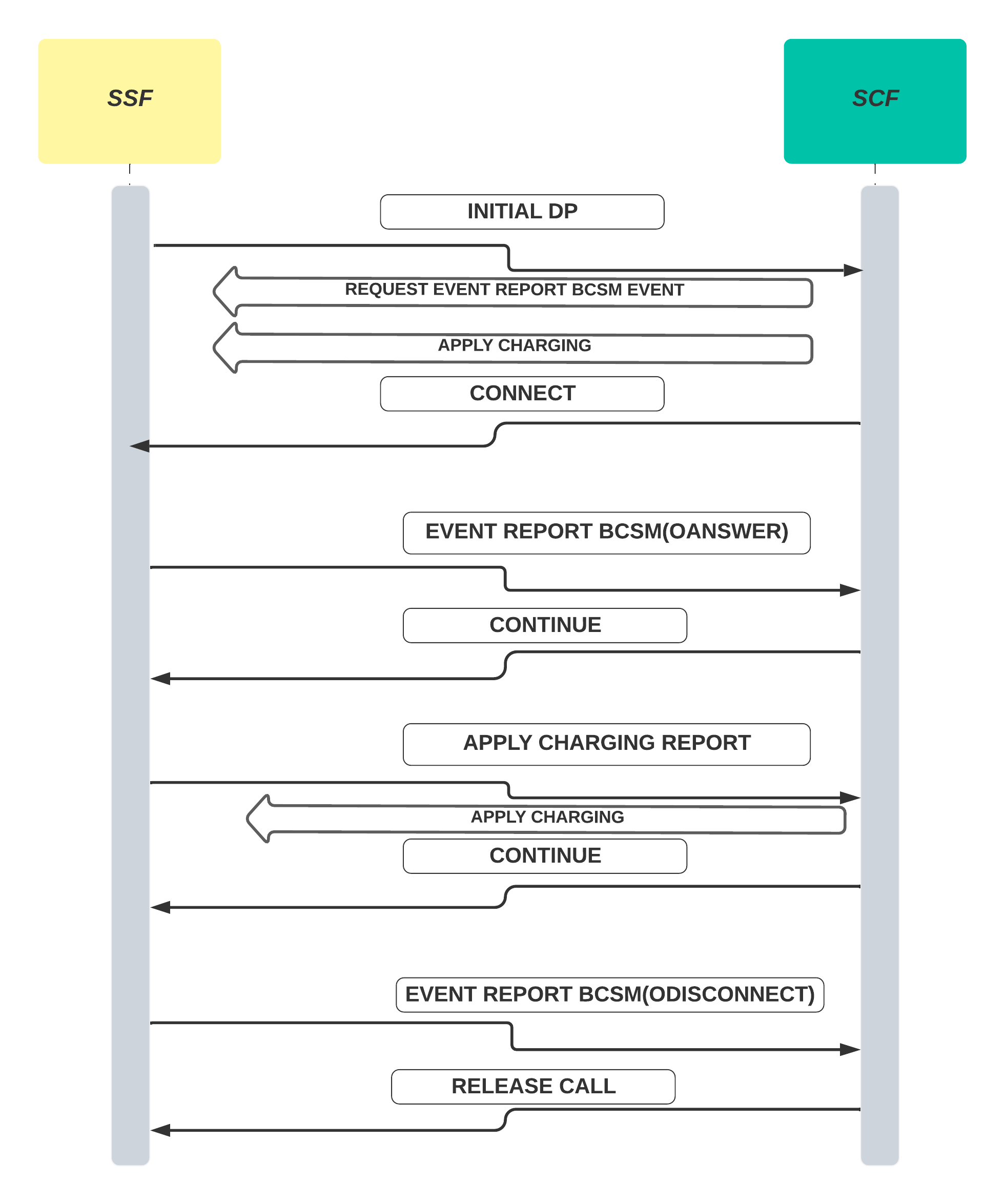AryaCapProxy - Overview
For mobile network vendors upgrading from 3G to 4G, it is not advisable to decommission 3G network elements from the network.
Vendors are obliged to keep their legacy network elements and interwork with latest generation network elements.
This is required to support backward compatibility of mobile devices and at the same time reduce TCO.
Aryagami’s CAPProxy/MAPProxy are easy to configure gateway server solutions used to bridge 3G and 4G components.
The CAPProxy is used to bridge CAP SS7 based dialogues from MSC into Diameter based 4G charging IN servers.

Diameter
Diameter Protocol is a peer-peer protocol defined by the IETF standard. Diameter, evolved from RADIUS, is primarily used as an access control mechanism.
It is used extensively in the 3GPP 5 release as an interface between various components. Known for its extensibility using AVPs,
Diameter brings in reliability and security using TCP/SCTP as transport protocols.
The 3GPP LTE standards use Diameter heavily for various signalling protocols and Gx, Gy, Ro to name a few.
The Gy interface used as real-time charging interface runs over diameter.
The interface defines a notion of session when UE attaches and detaches to the network.
The diameter AVPs carry service and charging parameters in addition to session-id. The following timing diagram shows the basic flow of charging interface using Gy/Ro
SS7
The legacy SS7 protocol is a fully OSI compliant stack used for signalling and switching various services in 2G/3G GSM standards.
With the evolution of IP as a prevalent network layer,
SS7 has redefined transport/network layers using SIGTRAN protocols. The SIGTRAN proposes usage of IP and SCTP at network and transport layers respectively.
The rest of higher layers in SS7 are retained where signalling is done across SP/STPs. The MAP and CAP are application layers used as signalling during service setup.
The CAP protocol is used for the charging interface for 2G/3G GSM networks.
The GSM CAMEL standards define the Service Control Point(SCP) component as call admission and charging control for various services including voice, data and SMS.
The interaction between Service Switch Function(SSF) that runs on MSC uses CAP protocol as real-time IN protocol to charge and allow prepaid services.
The following timing diagram shows the basic interaction between SSF and SCP to admit and charge a voice call.



Architecture
The CAPProxy gateway is a stateful server that acts as proxy for MSC and SGW.
The messages between MSC and OCS server are relayed by CAPProxy with required translation.
The following figure depicts the high-level architecture of CAPProxy deployment.
The SCP proxy module handles CAMEL based application requests from MSC. As per GSM CAP standard MSC invokes a new dialog with SCP when UE initiates a call,
data or SMS service. For every new dialog a session is initiated and maintained by CAPProxy. This session and related state is maintained until the lifetime of the dialog.
All the CAP related fields are translated into corresponding diameter fields that are required for diameter proxy. These parameters are used by diameter-proxy to initiate the credit request with OCS.
On the other side, the diameter proxy module maintains peering with OCS servers as per the configuration. The CAP requests are translated and relayed to OCS server. Similarly,
responses from OCS servers undergo the same translation and are sent to MSC via SCP proxy. The following figure depicts the flow diagram for a UE initiated call:


